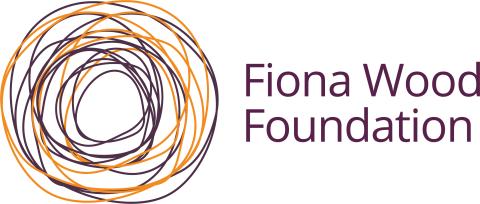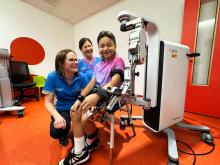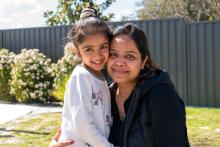On World Prematurity Day, we highlight two Western Australian organisations working tirelessly on research and programs that could save the 26,000 babies born prematurely each year in Australia.

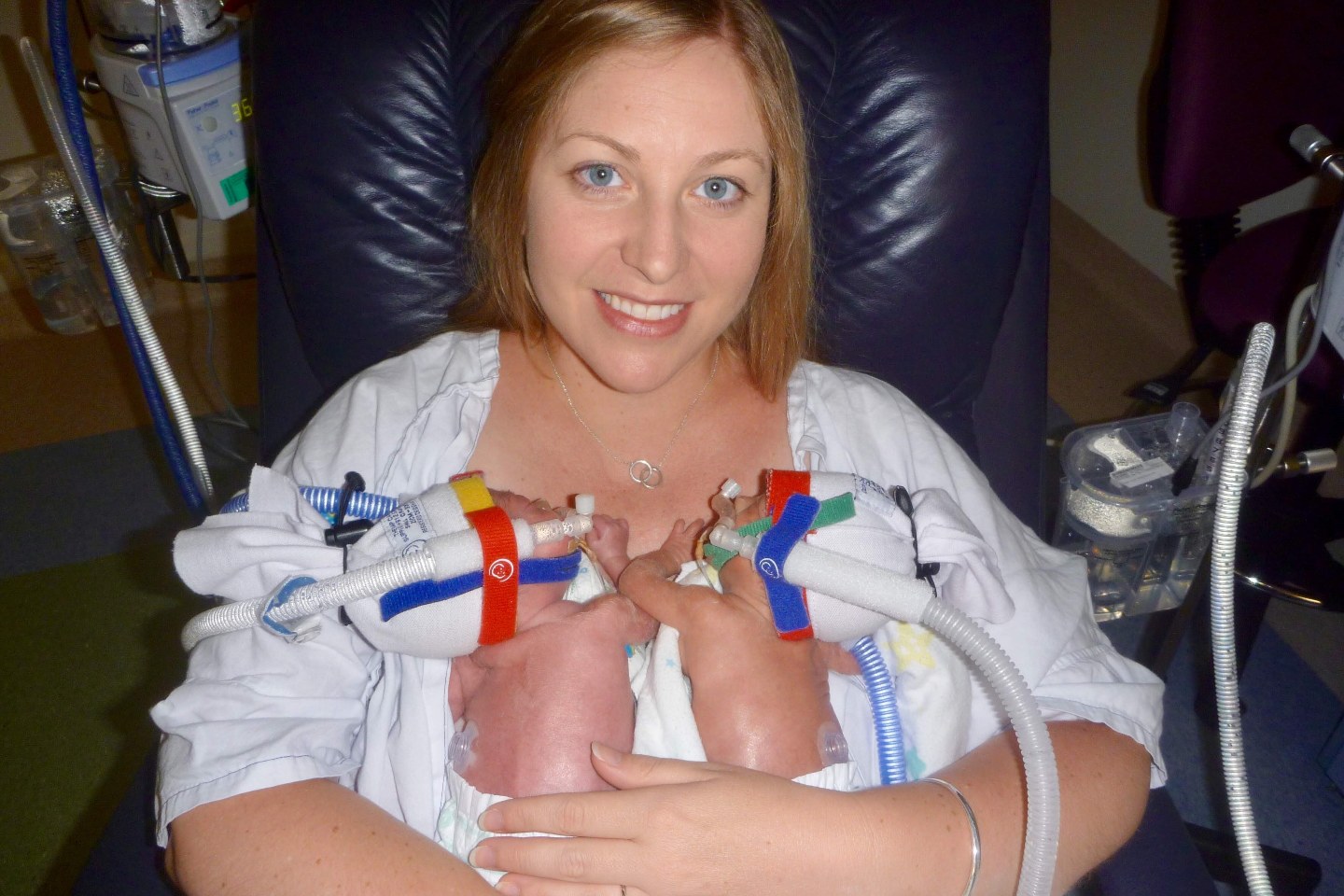
On World Prematurity Day, November 17, 2025, we highlight two Western Australian organisations working tirelessly on research and programs that could save the 26,000 babies born prematurely each year in Australia.
Women and Infants Research Foundation (WIRF) and Perth Children’s Hospital Foundation (PCHF) are investing in new innovations that are not only firsts for WA, but worldwide.
For Perth mother Katrina, the day her twins arrived was not marked by celebration, but by fear.
At just 24 weeks into her pregnancy, she gave birth to Olivia and Kyle, each weighing only 600 grams. Their survival was far from guaranteed.
“They told us the odds were fifty-fifty,” Katrina said.
“Each baby had their own team working on them. I didn’t even get to hold them for over a week. I just wanted them to live.”
For the next 89 days, the twins fought for life in King Edward Memorial Hospital's Neonatal Intensive Care Unit and special care nursery, enduring a series of complications common to premature babies, from brain bleeds and heart issues to the constant risk of infection.
Today, Olivia and Kyle are thriving Year 2 students, but the experience has left a lasting impact on their mother.
“I have experienced symptoms of PTSD,” Katrina said.
“I’ve had a lot of counselling. In the early days, I couldn’t let anyone else look after Olivia and Kyle. I wouldn’t let them out of my sight. Even when they started school, I just wanted them to be close.
“It wasn’t until more than five years after the twins were born – when they were finally given the all-clear – that I felt like I could breathe again.”
Olivia and Kyle’s survival – and recovery – is a story of strength and courage, but also of science.
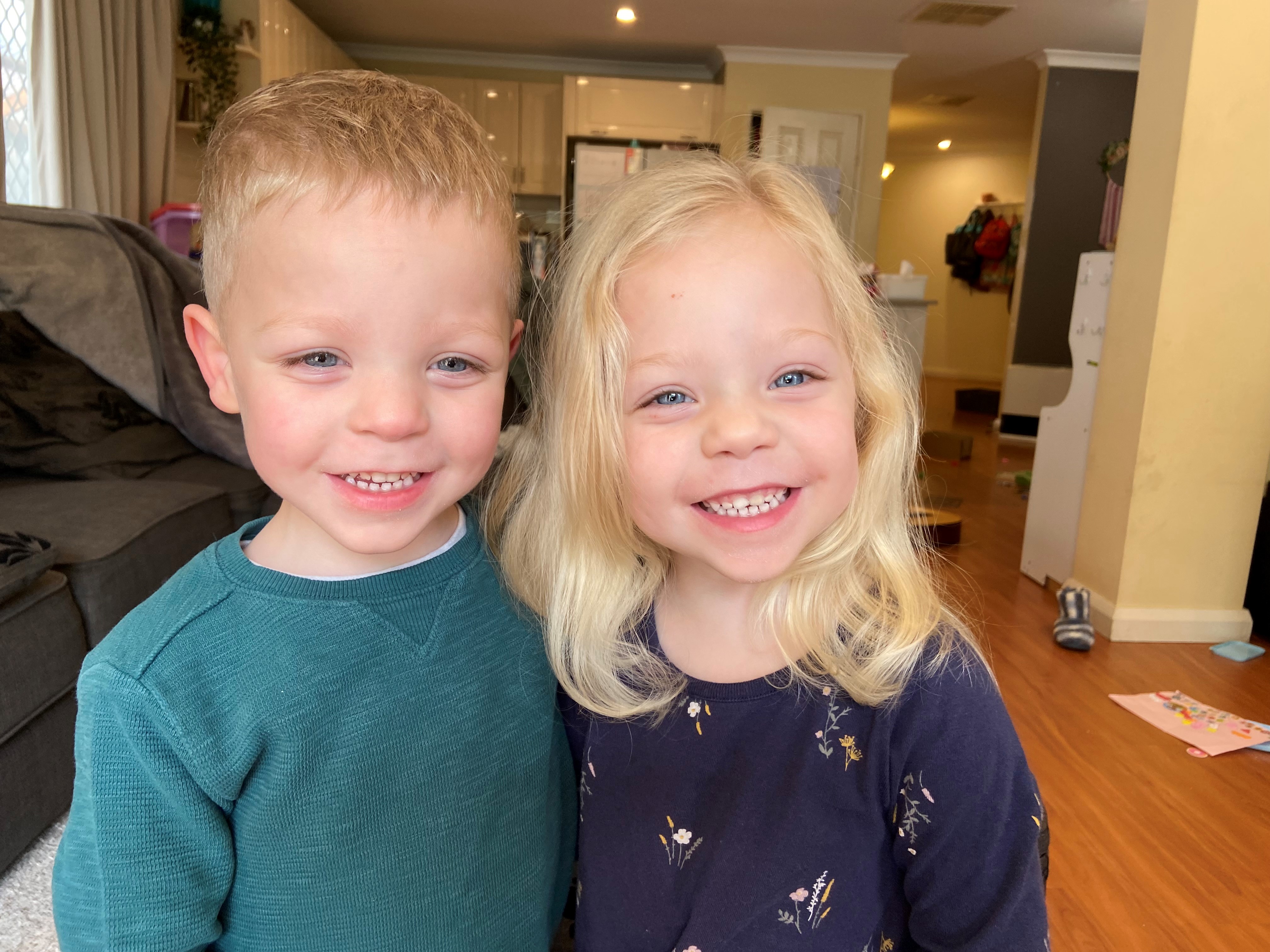
Kyle and Olivia, born as premature babies, are now happy and thriving.
Each year, some 26,000 Australian babies are born prematurely, before 37 weeks of gestation, and about one in 12 families experience the trauma Katrina and her husband Dave did.
In Aboriginal and disadvantaged communities, the rate is almost double.
Preterm birth remains the leading cause of death and disability among children under five, but WA is home to research that has been transforming outcomes for prematurity.
WIRF has been at the forefront of maternal and infant health research for nearly 50 years and its Preterm Birth Prevention Initiative has achieved a world-first 8 per cent reduction in preterm births across WA.
These results led to the national expansion of the initiative through the Australian Preterm Birth Prevention Alliance.
"The research and progress in neonatal care made a world of difference." WIRF patient Katrina
WIRF chief scientist Professor Matt Kemp said that being able to drive the improvements in health outcomes that mothers and babies deserve required researchers to be at the forefront of global efforts to develop evidence-based interventions.
“One in every 12 Australian babies is born too soon and among Aboriginal communities, that number is nearly double,” Professor Kemp said.
“Despite some progress in reducing these statistics, preterm birth remains the leading cause of death and disability among children under five. There’s still a lot of work to do.”
A global hub for neonatal innovation
WIRF is leading some of the most ambitious neonatal projects in the world.
The foundation’s Artificial Placenta Project has delivered the technology to support extremely premature babies in a womb-like, fluid-filled environment that mimics natural development.
This technology bridges the gap between the womb and traditional neonatal intensive care, aiming to reduce complications like brain injury, lung damage and infections and could reshape the survival curve for babies born before 24 weeks of gestation.
In another world-first, WIRF researchers have successfully demonstrated a pump-free artificial lung system in extremely premature models under two kilograms, marking a step toward safer life support for the tiniest and most fragile babies.
For the first time, WIRF researchers have also shown that a simple blood test from the mother could accurately predict how well a baby’s lungs are developing before birth.
This breakthrough could enable earlier, more targeted care for at-risk pregnancies.
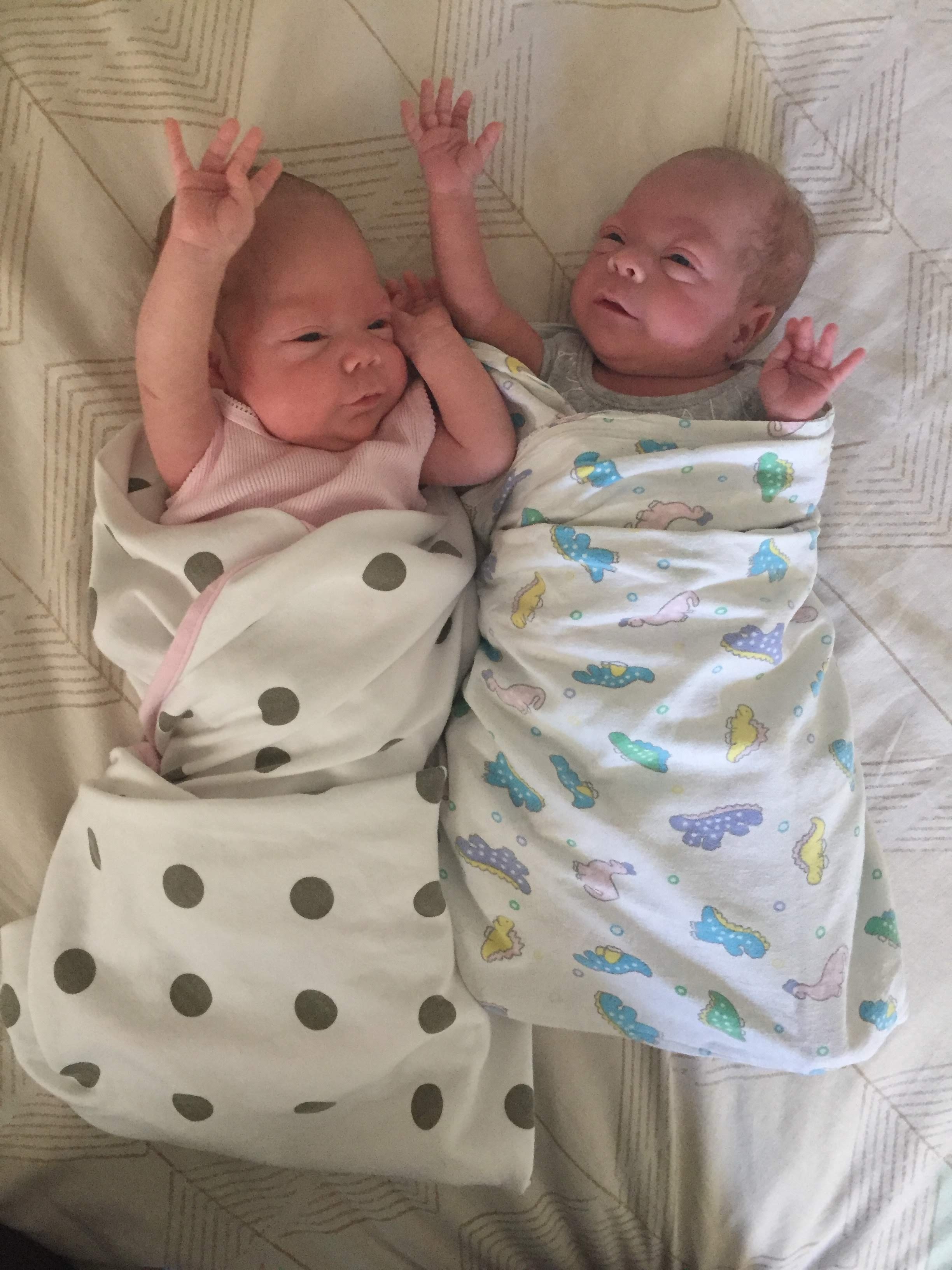
WIRF's ambitious neonatal projects have the power to save more babies and mothers from experiencing premature births.
The foundation is also supporting development of a transdermal patch, which offers a less invasive and potentially more effective delivery method for antenatal steroids compared to traditional injections.
Other ongoing studies are developing blood tests to detect pregnancy complications such as preeclampsia and infection before symptoms appear, and tools to identify fetal hypoxia, which occurs when oxygen delivery to the fetus is compromised.
Together, these advances are positioning WA as a global leader in maternal-fetal medicine and neonatal innovation.
"Our research is saving lives and improving outcomes every day, but we can’t do it without the community’s support." WIRF CEO Deb Portughes
For families like Katrina’s, WIRF’s outstanding research holds personal value.
“Anything that can improve outcomes for premature babies is amazing,” Katrina said.
“The research and progress in neonatal care made a world of difference. I was told they’d never seen an outcome this good for babies this small.”
WIRF chief executive Deb Portughes said stories like Katrina’s were a powerful reminder of what is at stake.
“Behind every statistic is a family fighting for their baby’s life,” Ms Portughes said.
“Our research is saving lives and improving outcomes every day, but we can’t do it without the community’s support.
“As we launch our Christmas Appeal on World Prematurity Day, we’re asking Western Australians to help us give more babies the best possible start to life.”
PCHF project to give babies every chance to live
Perth Children’s Hospital Foundation (PCHF) has a strong focus on premature births and enhancing care for the most fragile of babies, funding a range of programs to achieve this goal.
One of such programs was the purchasing of two life-like preterm simulation manikins, named George and Paul, to help train staff in high-pressure neonatal emergencies at Perth Children’s Hospital (PCH), King Edward Memorial Hospital (KEMH) and the Newborn Emergency Transport Service (NETS WA).
George was designed by an Australian film special effects team and has the same weight, lung capacity, facial features, and chest movement as a real 29-week-old preterm baby.
His features include a realistic airway, a chest that can rise and fall, and skin that reseals for repeated intravenous (IV) access training.
George’s realistic appearance allows clinicians to fully immerse themselves in high-stress simulation scenarios that mimic real-life emergencies.
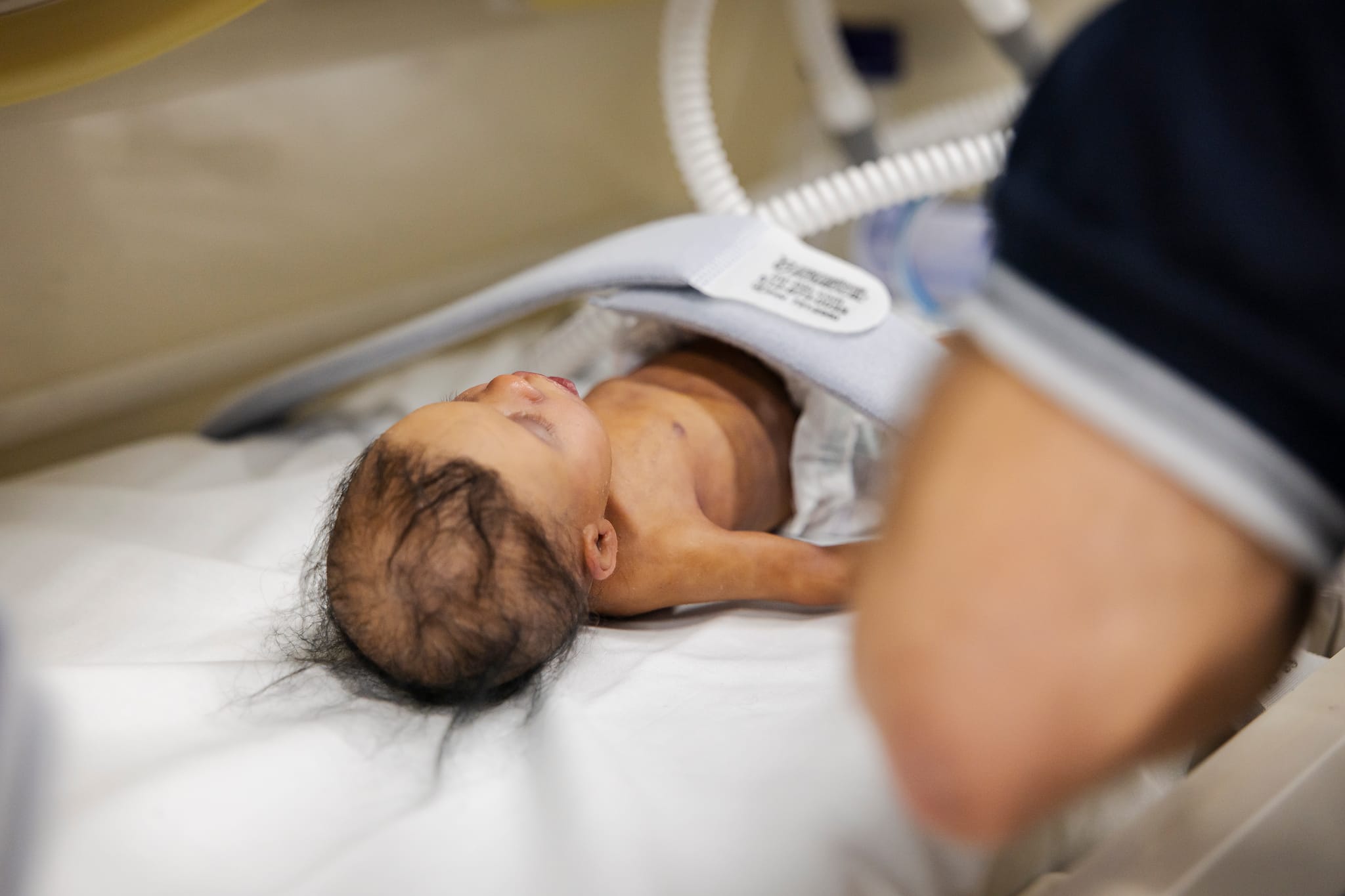
George is one of PCHF's life-like preterm simulation manikins helping to train staff for high-pressure emergencies.
PCH simulation educator coordinator David Barrett said research showed that replicating the stress and anxiety of real-world situations during training leads to better retention of knowledge and skills, ensuring healthcare professionals are as prepared as possible for emergencies.
“For that to work, however, participants must believe that it’s real, which is where George’s ultra-realistic design excels,” Mr Barrett said.
“For premature and low-birth-weight babies, that first hour of life – the ‘Golden Hour’ – is crucial.
“By practicing standard processes and protocols during this time, we can reduce risks like hypothermia, low blood sugar, poor lung function, and brain bleeds, which can be common in preterm babies.”
"Paul and George are not just manikins, they’re a game-changer when it comes to neonatal care." PCHF CEO Carrick Robinson
George’s compact, portable, lower-tech design makes the manikin easier to transport, allowing for on-site training across regional WA in locations such as ambulances, cars or even in-flight simulators.
In 2025, more than 100 clinicians – including GPs, midwives, nurses, paediatricians, and neonatal specialists – will have trained with George across Perth, Port Hedland and Geraldton.
George also plays a central role in the NeoSTARS Neonatal Stabilization and Transport Readiness program, which focuses on the ‘Golden Hour’ when medical care is the most effective for preventing irreversible damage.
Meanwhile, the other manikin Paul was the first high fidelity – or high realism – pre-term size training manikin in WA and was modelled on a real 27-week preterm baby.

Simulation baby Paul was modelled on a real 27-week preterm baby.
Weighing just over one kilogram and measuring 35 centimetres, Paul helps to deliver highly realistic, world-class neonatology training with his next-generation features.
He is one of the most advanced and realistic neonatal sim babies available today.
Paul’s wireless design makes him easy to transport, allowing for on-site training in the Neonatal Unit, training courses at both KEMH and PCH and with the NETS WA team.
Consultant neonatologist and KEMH sim education lead Dr Emma Harris said KEMH delivered the most preterm babies under 28 weeks in WA.
“With Paul, we can practice responding to complex, high-stress and emergency situations without putting patients at risk, ultimately improving outcomes for vulnerable premature and low-birth-weight babies,” Dr Harris said.
Advanced simulation helps healthcare professionals practice vital skills that can significantly improve both short-term and long-term health outcomes for preterm infants.
PCHF chief executive Carrick Robinson said the flexibility to transport George and Paul ensured healthcare professionals can access top-tier training wherever needed.
“Paul and George are not just manikins, they’re a game-changer when it comes to neonatal care,” Mr Robinson said.
“By offering world-class training, we can empower medical teams at KEMH and PCH to deliver the best possible care for our most vulnerable patients.”






